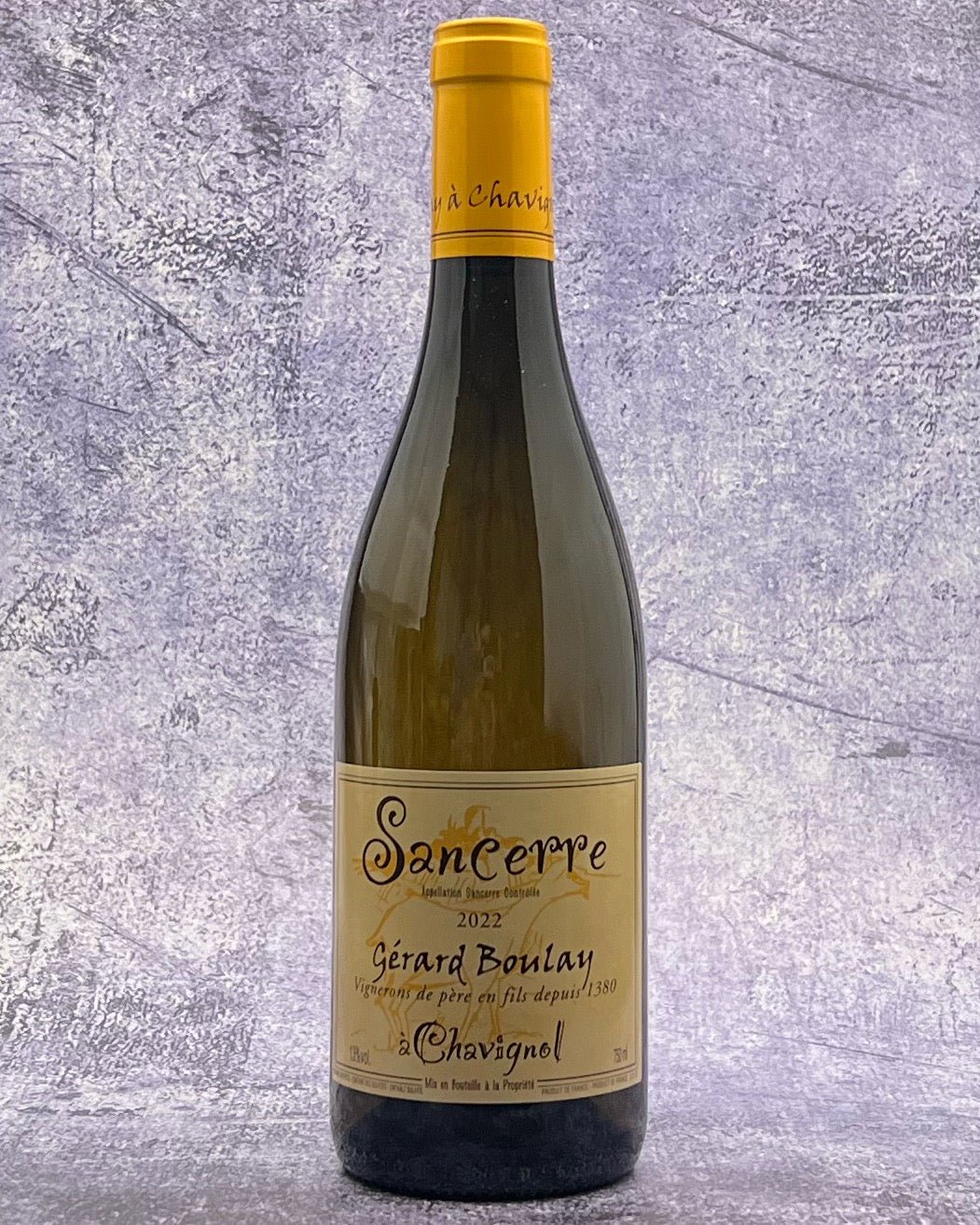Description
From: Chavignol, Sancerre, Loire Valley, France
Varietal: Sauvignon Blanc
Tasting Notes: This opens with a stellar bouquet of gooseberry, tangerine, lime peel, and great minerality, complemented by white flowers and just a hint of fresh tarragon. The nose shows the density and depth of aromas, with pure grapefruit and citrus aromas embodying the raciness and precision that Chavignol is renowned for. The palate is pure at the core, displaying focus and grip. Initially, bright citrus and herbaceous notes are prominent, but a few swirls in the glass reveal layers of melon, pink grapefruit, and a delicate spice of white pepper and minerals. This wine is opulent without delving into tropical flavors, maintaining wonderful acidity while being lush and mouth-coating. The finish is long and complex, with snappy acids and a strong minerality.
Pairing: Its bright citrus notes and mineral undertones pair beautifully with goat cheese tart, highlighting the wine's crispness and complementing its creamy texture. For seafood lovers, a plate of seared scallops with light lemon butter, Smoked salmon with dill and capers, or steamed mussels in white wine sauce. A herb-crusted chicken breast with roasted vegetables, spinach & feta-stuffed mushrooms, or pork tenderloin with apple and sage brings out the wine's herbaceous notes. In contrast, the earthy vegetables underscore its mineral finish. The wine's complexity also resembles a classic French onion soup, where the rich, savory broth and melted gruyere cheese contrast delightfully with the Sancerre's vibrant freshness.
Herb Crepes With Goat Cheese Filling
By Martha Rose Shulman
About. Within the famed Sancerre region, the Boulay family has been an integral part of the wine world since 1380. For nearly six centuries, the Boulays have cultivated their vines, creating wines that reflect the unique terroir of their land. The current patriarch, Gerard Boulay, has spent almost 60 years perfecting his craft, holding about 9 hectares of vineyards on the steeply sloped hill of Chavignol, the heart of Sancerre.
The land records for that year mention Jean Boulay as the owner of vineyards in Chavignol. At the time, the Clos de Beaujeu in Chavignol was already known for the quality of its white wine, which is remarkable since Sancerre was known as a red wine area until after phylloxera invaded it. In the 14th century, the Clos de Beaujeu supplied the Cathedral of Bourges with white wine.
Of the 9 hectares owned by Gerard Boulay, eight are on the slopes of Chavignol, a small village within Sancerre. The village's soils, known as "terres blanches," are composed of chalk and limestone, similar to those of Champagne and Chablis. Some of their most prized vineyards include the famed “crus” of Monts Damnés, La Grande Côte, and Clos de Beaujeu. This terroir imparts a distinctive mineral quality to the wines, contributing to their renowned crispness and complexity.
Since 1990, Boulay has farmed his vineyards organically, eschewing synthetic chemicals to maintain the soil's natural health and balance. The vineyards are worked and harvested entirely by hand. The vines, aged between 35 and 70 years, dig deep into the Chavignol soil, extracting the essence of the terroir. Mr. Boulay planted the youngest of his vines at the domaine in 1972.
Boulay's winemaking philosophy is one of minimal intervention. Boulay has been farming organically since 1990 and harvests everything by hand. The wines ferment naturally with native yeasts; most are aged in tanks. For the "parcellaire" wines, aging
occurs in a mix of Foudres and used 300L barrels. Gerard Boulay adds no yeast and minimal sulfur during vinification, describing his role as“surveillance” to ensure nothing goes wrong. He works instinctually, allowing nature to take its course, embodying the belief that "C’est la nature qui fait le vin" (Nature makes the wine).
The 2022 vintage in Sancerre was marked by hot, dry conditions that surprisingly yielded wines of moderate alcohol with wonderful zip and bite. Boulay’s meticulous approach to harvesting—waiting for the ripeness of skins and seeds—results in wines with amplitude, breadth, density, and many peach, apple, and lemon/lime fruit. As the wine opens, the chalk and flint minerality characteristic of Sancerre comes forward, along with initially hidden acidity, giving the wine a refreshing vibrancy. The finish is long, generous, and mineral-driven, with sneaky acids pricking the palate, providing a mouthwatering freshness.

